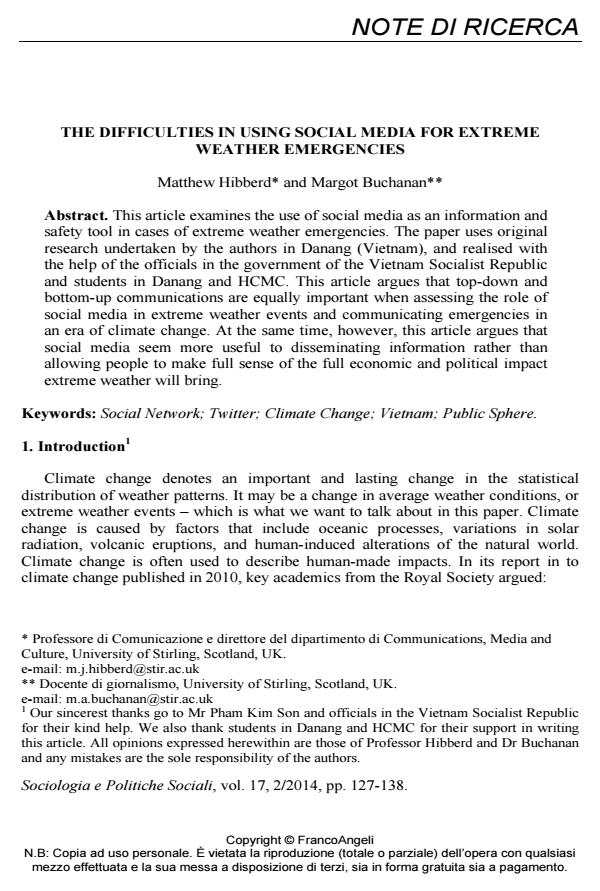The difficulties in using social media for extreme weather emergencies
Journal title SOCIOLOGIA E POLITICHE SOCIALI
Author/s Matthew Hibberd, Margot Buchanan
Publishing Year 2014 Issue 2014/2
Language Italian Pages 11 P. 127-137 File size 70 KB
DOI 10.3280/SP2014-002008
DOI is like a bar code for intellectual property: to have more infomation
click here
Below, you can see the article first page
If you want to buy this article in PDF format, you can do it, following the instructions to buy download credits

FrancoAngeli is member of Publishers International Linking Association, Inc (PILA), a not-for-profit association which run the CrossRef service enabling links to and from online scholarly content.
This article examines the use of social media as an information and safety tool in cases of extreme weather emergencies. The paper uses original research undertaken by the authors in Danang (Vietnam), and realised with the help of the officials in the government of the Vietnam Socialist Republic and students in Danang and HCMC. This article argues that top-down and bottom-up communications are equally important when assessing the role of social media in extreme weather events and communicating emergencies in an era of climate change. At the same time, however, this article argues that social media seem more useful to disseminating information rather than allowing people to make full sense of the full economic and political impact extreme weather will bring.
Keywords: Social Network; Twitter; Climate Change; Vietnam; Public Sphere
Matthew Hibberd, Margot Buchanan, The difficulties in using social media for extreme weather emergencies in "SOCIOLOGIA E POLITICHE SOCIALI" 2/2014, pp 127-137, DOI: 10.3280/SP2014-002008